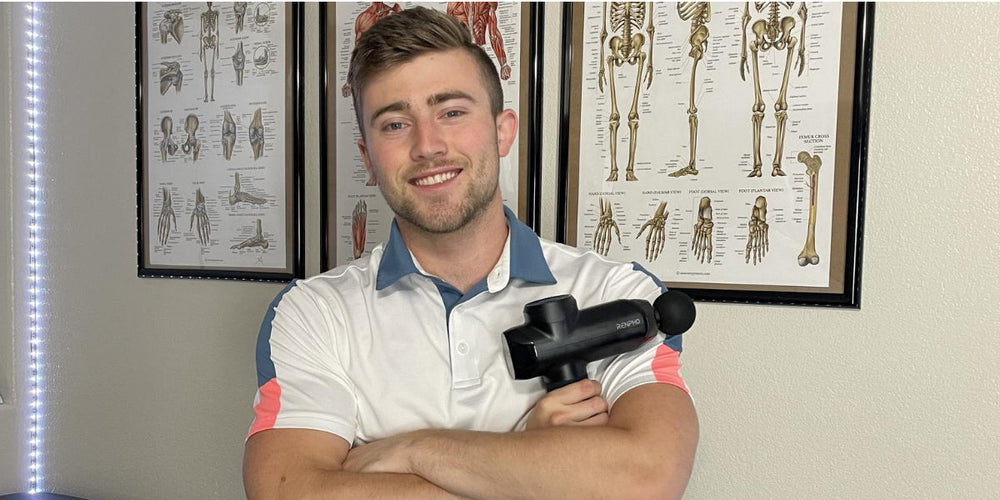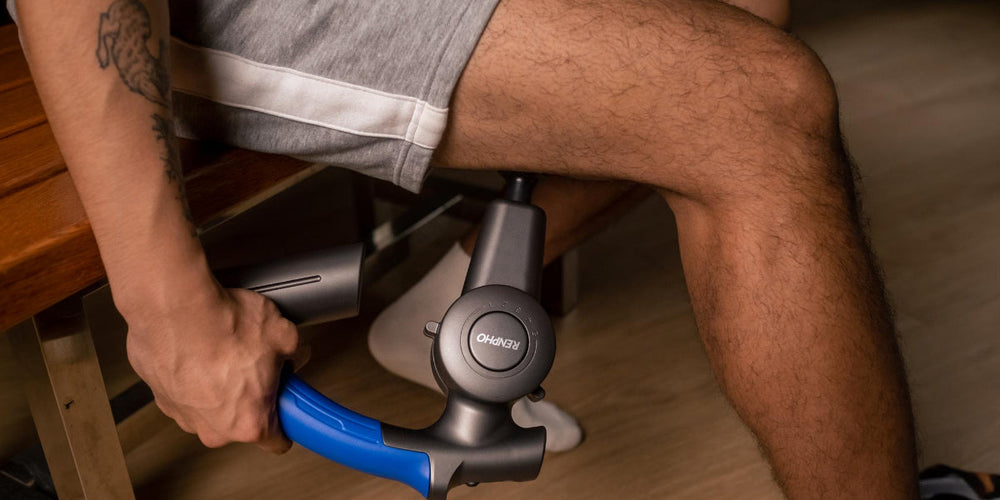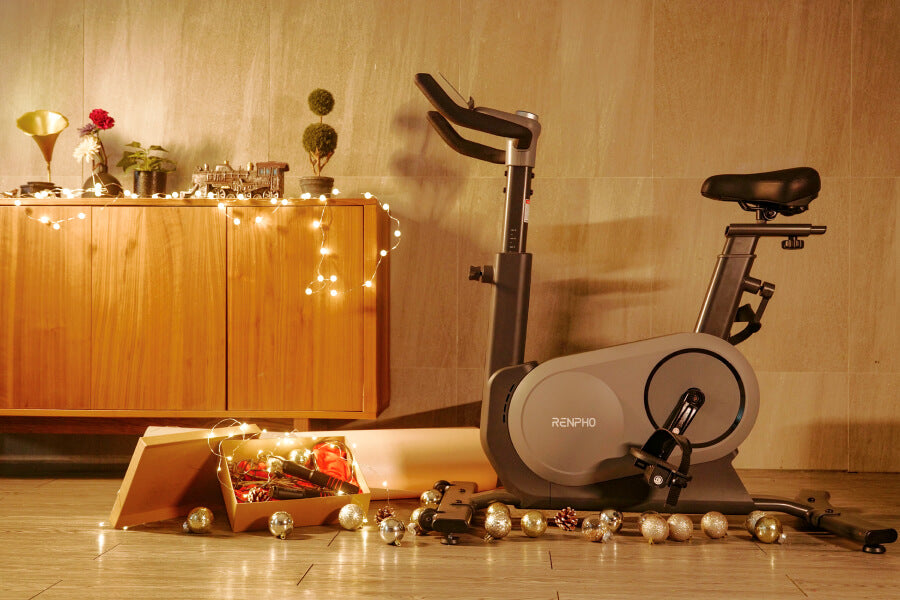Improve Your Flexibility & Workout Results with Dr. Devon

Stay tuned to our latest news
Everyone looks forward to getting a long break during the holidays. During this time, we often neglect our health routines, forget about our wellness, and get into unhealthy habits. Making healthy food choices and working out during this season take a back seat, whilst simple mobility exercises become a lot less of a priority for most people.
But if you’re ready to kickstart 2023, a year of real progress in your wellness goals, then it’s time to start maximising your Instagram feed for inspiration and tips. With over 169,000 followers on Instagram, we chat with Physical Therapist Dr Devon Hoffman, whose mission is to spread the word about how important mobility is to our overall health and fitness!
1. Hi Dr Devon! Can you tell us about yourself?
My name is Dr Devon Hoffman and I am the founder of RISE Train. I was born in Idaho, USA and have lived in Idaho my entire life. I graduated from Boise State University with a Bachelor of Health Science in 2019. After graduation, I then attended Idaho State University where I obtained a Doctorate of Physical Therapy in 2022. I am also a Certified Strength and Conditioning Specialist through the National Strength and Conditioning Association (NSCA) since 2021. I began my journey in this industry when I started posting educational content during the pandemic to help people to understand how to stay pain free when isolated from the pandemic. After numerous requests, I created “Rise Train” – a company built around 1on1 training for people at home with an educated physical therapist or mobility coach. I have been coaching for multiple years virtually now and have helped more than 100 people to get and stay pain free.
2. What is mobility? How does it come into play for getting us into our deeper range/hitting a higher rep?
I like to think of mobility as active stretching. It is basically moving into deeper ranges of motion but doing it actively. This not only improves our flexibility but also our ability to control the movement by enhancing our brain’s motor control potential. The end result is deeper range, and even heavier lifts due to more motor recruitment throughout exercise or daily life.
3. What’s the difference between dynamic stretching vs static stretching? Which one should I focus on?
Dynamic stretching refers to actively moving through motion. This is very similar if not the same as “mobility.” Static stretching refers to getting into a stretch and holding this. There is emerging research suggesting that dynamic stretching is better overall, but personally I find that a combination of dynamic stretching for warmups and static stretching for mostly cooldowns gives my clients and patients the best results.

4. Why do we need to hit a range of motion? What’s the importance of it?
Range of motion is important primarily because we NEED a certain range of motion to do activities. For instance, to simply be able to sit comfortably in a chair, we need about 90 degrees of hip flexion range of motion. If we do not have this, our spine or knees will compensate to allow us to perform an action, which leads to pain and injury in most cases.
5. What are the limitations of a short mobility range?
Limitations of short mobility range means limited activity participation (can’t squat for example), and as a result, the person squats less. As a person can’t do as much, they tend to do even less than before, which further limits their range of motion. This repeating cycle leads to more and more tightness over time.
6. How do we recover from overstretched muscles from class (e.g. overstretched hamstring)?
For generalised overstretching or low degree muscular strains, using massage guns or other modalities in the early stages can be fantastic for increasing blood flow and healing. After this, it is important to implement a gradual progressive strengthening and mobility routine made from a professional to get you back to pain-free movement and beyond.

7. Do you have stretching tips for people with desk jobs?
YES! So for people who have desk jobs, there are 2 main things to focus on for bad posture.
The first is optimising your setup. This means making sure you have good ergonomics. Good chair, desk, keyboard, and monitor positioning can make a huge impact over the course of weeks, months, or even years!
The second is reoccurring movement throughout the day. This means that standing desks, walking, or a posture program like the ones at RISE Train can help to guide you into constant stretching throughout the day to stimulate blood flow and greatly reduce pain in as little as 2 weeks on average.
8. How do I know if I’m stretching incorrectly?
In almost every case, PAIN can be your guide. Not only while performing but for the 48 hours after. Listen to your body, assess, make adjustments, and push on!
9. Do you have tips to improve neck tension and upper shoulder pain?
For neck tension and upper shoulder pain, assess what causes it and what are you doing the hours before it comes about. Usually this is hours of computer work, driving, or specific exercises. Whatever it may be, assess what that is, and implement corrective exercise, stretching, and massage gun use to improve circulation to let it heal quickly.

10. Is there a proper way to breathe while stretching?
Yes! I teach many breathing patterns. The easiest and most popular is diaphragmatic breathing. In this technique, you expand through the lower belly deeply by breathing in through the nose, and exhale slowly with pursed lips through the mouth. Implementing this into stretching, I like to have people exhale to get into a deep stretch, then breathe in this position for 30 seconds to 1 min, going deeper each and every exhale.
11. Is there a myth/s surrounding stretching that you want people to know?
YES! There are many, but the biggest myth is that stretching will fix muscle soreness or pain long term. In the short term, it can be a band-aid to reduce tension, but in the long term, you really need active mobility, consistent movement, strength, and activity changes to really see years of life without soreness. And it only takes a few minutes each day!
Conclusion
Sustaining mobility through the year is important. The insights shared here can help you to remain motivated and committed to be active, even during this holiday period.
Renpho Health Tips
-

Tips to Use a Massage Gun: Dos and Don'ts
Sep 21, 2022
Read more >
-

Tips for Tight Hips & Hamstrings
Oct 18, 2022
Read more >
-

Why You Should Start Upper-Body Exercises
Nov 21, 2022
Read more >
-

Renpho Seasonal Staff Picks 2021
Dec 05, 2021
Read more >
-

Stress-Relief Tools for Everyone Who Sits at a Desk
Sep 29, 2022
Read more >


